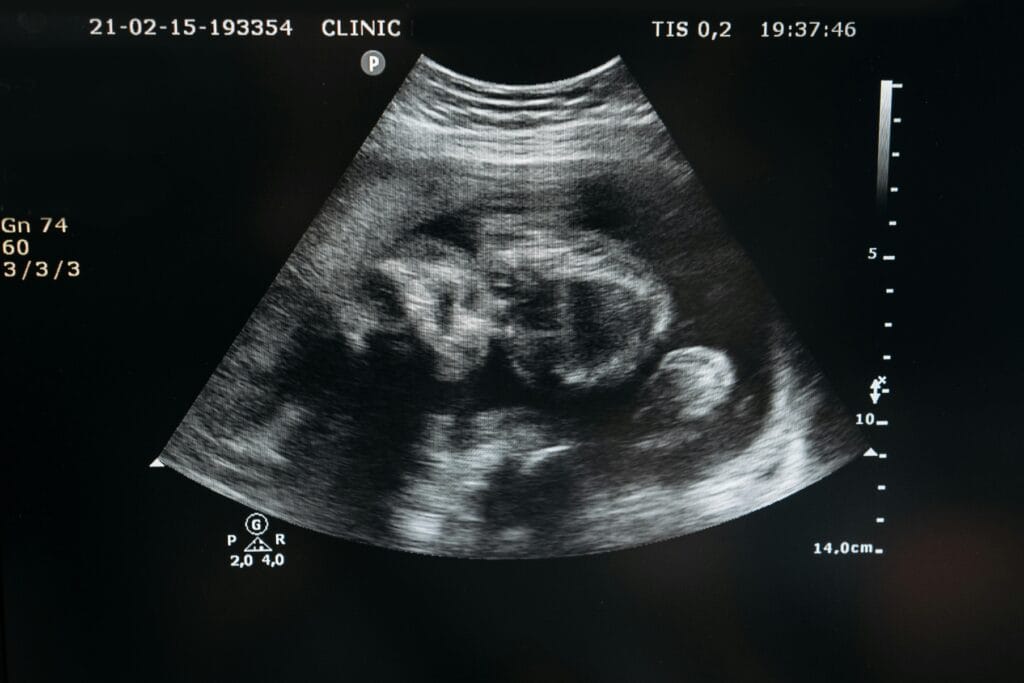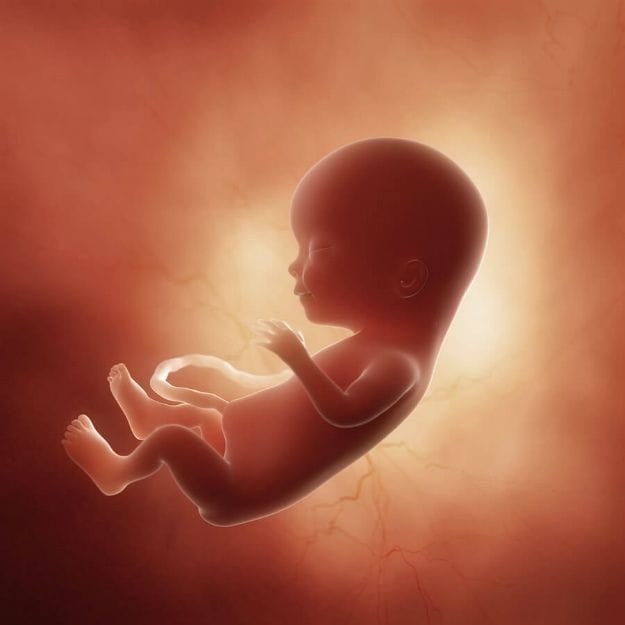Fetal Movement: The First Signs of Your Baby’s Development

Nothing compares to the mystical second whilst a mom feels her child circulate internal her womb for the first time. It’s an emotional and awe-inspiring enjoy, as though the baby is whispering to her, reassuring her that they’re developing and thriving. From the primary tiny flutter to the stronger kicks in later months, those moves come to be a completely unique language between the mom and her unborn child. They provide insight into the baby’s well-being, energy degrees, and even responses to sounds and contact. In this text, we can take you on a lovely adventure to recognize while fetal motion begins, how it adjustments at some stage in pregnancy, and what each movement way, so that you can feel reassured and linked in your growing infant. 💕
fetal movement
Fetal movement actually begins very early in being pregnant, but the mother does no longer sense it right away. The infant begins shifting as early as week 7 or eight, while tiny muscle tissues start to increase. However, these moves are too vulnerable to be felt. During this level, an ultrasound can hit upon fetal motion, however it’s still imperceptible to the mom.
Most women begin to sense their infant flow between weeks sixteen and 25. If that is a mother’s first being pregnant, she won’t recognize these moves till around weeks 20 to twenty-five. However, women who have been pregnant earlier than regularly sense movement in advance, around weeks sixteen to 18, because they are more acquainted with the feeling.
At first, fetal actions experience very light and subtle. Frequently improper for gasoline bubbles, moderate flutters, or tiny pulses. But because the infant grows stronger, these sensations become wonderful kicks, rolls, and stretches. By the 1/3 trimester, fetal movement becomes a everyday and reassuring part of each day existence, turning into stronger as the due date processes.
what does fetal movement feel like

Feeling the infant flow within the womb is an thrilling and emotional revel in, specially for first-time moms. Initially, it may be hard to differentiate fetal motion from other physical sensations, which includes digestion. However, because the child grows, the actions emerge as more potent and greater recognizable.
1. What Do the First Movements Feel Like?
During the early weeks of motion (among weeks sixteen–25), fetal interest looks like:
- A soft flutter, like butterfly wings brushing towards the belly.
- Tiny bubbles, much like slight gasoline motion.
- Light pulses, almost like small twitches under the pores and skin.
At first, these actions may be abnormal, with some days wherein the mom doesn’t sense them in any respect. This is absolutely normal due to the fact the toddler is still small and its moves aren’t yet robust.
2. How Do Movements Change as Pregnancy Progresses?
As the child grows, their actions end up extra great and sundry, including:
- Stronger kicks, in particular around the fourth and 5th months.
- Stretching and rolling movements as the child adjustments positions.
- Rhythmic twitches, frequently resulting from fetal hiccups, which are completely regular.
By the third trimester, actions turn out to be extra constant. The child may additionally have lively durations, frequently in the evening or after the mom eats. Some actions would possibly even positioned strain on the bladder, causing frequent urges to urinate.
3. Do Movements Differ from One Pregnancy to Another?
Yes! Each infant has a completely unique movement sample. Some moms experience movements in advance, even as others may also take longer. Factors that affect motion belief consist of:
- Number of pregnancies: Women who have been pregnant before typically recognize moves in advance.
- Placenta role: If the placenta is on the the front (anterior placenta), it is able to cushion movements, making them harder to sense.
- Baby’s persona: Some babies are evidently greater energetic than others, that’s perfectly normal.
How Does Fetal Movement Develop Throughout Pregnancy?
Fetal movement is one of the first ways a toddler communicates with their mom. It begins as faint, unnoticeable motions and regularly will become more potent and greater described as pregnancy progresses. Let’s test how fetal motion develops month with the aid of month.
- Months 1–2 (Weeks 1–8) 💙 : Tiny beginnings, however no sensation. At this stage, the child is just a cluster of developing cells, and organs are forming rapidly. By the seventh or 8th week, muscle development begins, and the toddler starts offevolved shifting, however these actions are involuntary and too faint to be felt.
- Month 3 (Weeks 9–12) 💙 : First unnoticeable actions. By this month, the infant starts offevolved making small, random movements, together with stretching arms and legs. These may be visible in an ultrasound but remain too susceptible for the mom to feel.
- Month four (Weeks thirteen–sixteen) 💙 : The first sensations start. As muscular tissues beef up, actions become greater defined. Some experienced moms may start to experience mild flutters, but for most, it’s still too early to note.
- Month 5 (Weeks 17–20) 💙 : The first recognizable moves! This is while most mothers begin feeling their child move. These preliminary movements are mild and experience like tiny flutters or bubbles. Babies may additionally start reacting to outside sounds, moving more after they hear voices or tune.
- Month 6 (Weeks 21–24) 💙 : Stronger kicks and movement patterns. Movements turn out to be stronger and more common. Mothers might also notice that the infant has a each day pastime sample, frequently being extra lively within the night. Some infants even get hiccups, which experience like small rhythmic jumps within the stomach.
- Month 7 (Weeks 25–28) 💙 : More interaction and response to stimuli. By now, fetal movements are sturdy and regular. Babies can recognize their mother’s voice and reply to the touch. Many moms note increased movement once they eat candy ingredients or lie down.
- Month 8 (Weeks 29–32) 💙 : Less space, stronger kicks. As the child grows, there may be less room to transport, but kicks and stretches stay effective. Mothers would possibly see their belly visibly move whilst the toddler shifts position.
- Month nine (Weeks 33–40) 💙 : Preparing for beginning. By the last month, actions can also end up less common but nonetheless strong, because the infant has much less room. Instead of kicks, mothers feel pressure and stretching as the toddler receives into position for birth. Any surprising lower in movement should be checked with the aid of a medical doctor.
Factors Affecting Fetal Movement

Several elements can boom or decrease fetal movement, which includes:
- Gestational age: Movement will increase as being pregnant progresses but may additionally slightly decrease within the 9th month due to restrained area.
- Fetal and placenta function: An anterior placenta may additionally reduce the feeling of movement, even as a comfortable fetal function may also enhance it.
- Mother’s activity: Daily movement may also make the mother less aware about fetal motion, whereas rest can make it greater substantial.
- Nutrition: Eating sugary ingredients can growth fetal interest, while movement can also lower while the mother is hungry.
- Sounds and stimuli: The fetus may additionally respond to loud sounds or the mother’s voice via transferring.
- Stress and maternal health: Anxiety or fatigue may also lessen fetal hobby due to their impact on blood circulate.
- Amniotic fluid ranges: It presents area for motion, and its reduction may additionally restriction fetal movement.
If you notice a substantial decrease in movement, it is best to seek advice from a doctor. 💙👶
when to worry about increased fetal movement
It is normal for fetal movements to differ from each day, and occasionally a mom might also observe that her infant is shifting less than typical. But when is this normal, and whilst need to you be worried and consult a medical doctor?
When is it ordinary?
- In early pregnancy stages, moves may not be normal, and some days can also bypass with out the mom feeling them, specifically if the placenta is anterior or if the mother is busy and moving loads for the duration of the day.
- In the 0.33 trimester, moves might also lower slightly due to the child having much less space, but the infant stays active, and moves should nonetheless be felt daily.
- After eating or whilst relaxing, fetal movement may boom because of a rise in blood sugar levels.
When have to you be involved?
In a few cases, fetal movement may decrease considerably, which calls for interest. You have to see a physician if:
- The mom does no longer feel any movement after week 25.
- A unexpected drop in movement or a complete forestall takes place.
- The baby does not move at the least 10 times in hours after week 28.
- The actions feel weaker or notably less common than common.
Doctors usually perform an ultrasound or screen the fetal heart fee to make certain the toddler’s properly-being.
🩺 What must you do in case you word reduced motion?
- Try lying for your left aspect in a quiet place and focus on movements.
- Eat something sweet or drink a cold beverage .This could stimulate motion.
- If you do no longer feel at the least 10 actions in hours, contact your physician at once to check the toddler’s health and make certain the whole lot is exceptional.
Fetal movement is an crucial indicator of the baby’s health and development within the womb, and its electricity changes in the course of being pregnant. Every pregnant mother must reveal these actions and have interaction with them. It’s far the primary form of verbal exchange with the child. If you word any uncommon changes, do now not hesitate to seek advice from a medical doctor. Your protection and your baby’s nicely-being come first! 💙👶
References:
Read also:
Breastfeeding: Food of Love and Health for Mother and Baby
